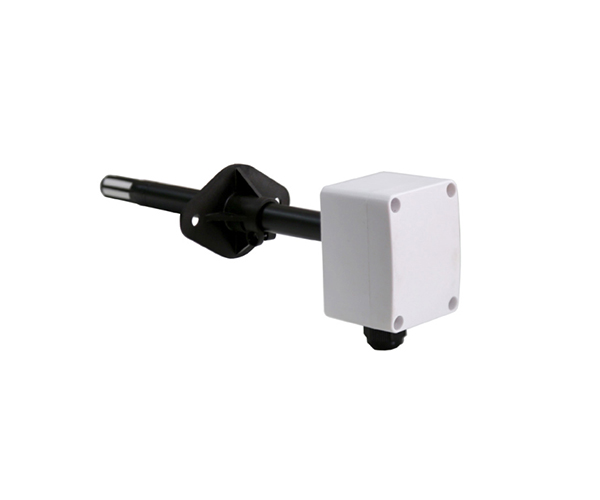
Air Duct CO2 Sensor
PCT-CO2-D

Product description
The air duct CO2 sensor PCT-CO2-D is an air duct carbon dioxide sensor with easy installation, simple operation and low cost. It is a sensor specially designed for intelligent buildings and other places that need to detect carbon dioxide levels. For intelligent ventilation system control, it has a good balance of energy saving and indoor air quality improvement.
Features of Air Duct CO2 Sensor
A. High precision infrared pyroelectric module
B. Quick and simple installation form
C. The insertion depth is adjustable
D. Various output forms and range jumpers are available
E. AC and DC power supply can be
F. ABC automatic validation
G. IP65 encapsulation grade (ducted type)
Technical Specifications
Product number | PCT-CO2-D |
test substance | carbon dioxide |
Operating Voltage | 24Vac/dc |
Shell material | ABS+PC |
output signal | 0~10V or 4~20mA (jumper selection) |
Preheat time | <1min (full scale <15min) |
Operating temperature | -10~50℃ |
Working humidity | 0~95%RH (No condensation) |
Dimensions | 80×80×37.2mm(L×W×H) |
weight | 90 g |
life | >Five years |
Metrics and Precision
Name | Measuring range | Accuracy error |
Duct CO2 sensor PCT-CO2-D | 0~2000ppm(Standard fitting) 0~5000ppm(Optional) | ±40ppm or 3%Reading |
Wiring diagram



Installation and Precautions
A. The sensor should be installed in a relatively stationary position.
B. After all other electronics and tests are complete, connect the sensor to the controller.
C. Ensure that the power supply voltage is within the allowable rated range.
D. It is recommended to use the screened wires to connect to avoid the control wires going through places with large magnetism and noise; do not hang heavy objects on the wires.
E. The sensor should not be in direct contact with water and should not be exposed to avoid saturation condensation. Non-professionals are not allowed to dismantle electronic components and sensors to avoid possible damage.
